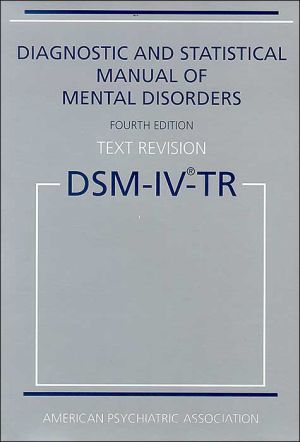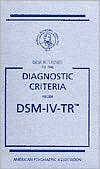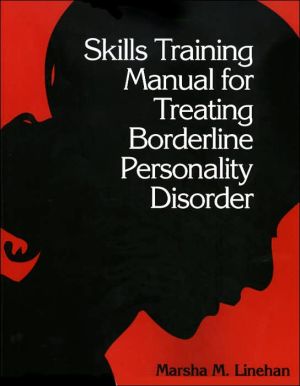Motivational Interviewing, Second Edition: Preparing People for Change
Since the initial publication of this breakthrough work, motivational interviewing (MI) has been used by countless clinicians. Theory and methods have evolved apace, reflecting new knowledge on the process of behavior change, a growing body of outcome research, and the development of new applications within and beyond the addictions field. Extensively rewritten, this revised and expanded second edition now brings MI practitioners and trainees fully up to date. William R. Miller and Stephen...
Search in google:
A decade ago, I had the opportunity to review a refreshing and exciting book called Motivational Interviewing. I predicted it would become a classic in the field, and indeed it did. Now the authors have provided us with a wonderful, enlightening, second edition that will continue to be a classic. From the time of the first edition, MI has taken by storm not only the addictions field, but also the health care field in general. Consequently, much is new in the book. Miller and Rollnick have done it again--they have delivered a gem of book that should be read by anyone, whatever their discipline, who provides clinical services. — Center for Psychological Studies, Nova Southeastern University Booknews Outlines specific strategies for building motivation and strengthening commitment to change in patients undergoing addiction treatment. The authors illustrate the concepts through sample conversations with clients. The second edition broadens the scope to other areas of behavior modification and adds chapters on applications of motivational interviewing. Annotation c. Book News, Inc., Portland, OR (booknews.com)
Motivational Interviewing\ Lessons Preparing People for Change \ \ By William R. Miller Stephen Rollnick \ The Guilford Press\ Copyright © 2002 The Guilford Press\ All right reserved.\ ISBN: 1-57230-563-0 \ \ \ Chapter One\ Why Do People Change? \ Until one is committed, there is hesitancy, the chance to draw back, always ineffectiveness, concerning all acts of initiative and creation. There is one elementary truth, the ignorance of which kills countless ideas and splendid plans: that the moment one definitely commits oneself, then Providence moves too. All sorts of things occur to help one that would never otherwise have occurred. A whole stream of events issues from the decision. -Johann Wolfgang von Goethe\ Interest in the topic of motivation often begins with wondering why people don't change. It is a common frustration for health professionals and teachers, counselors and parents, and those who work in social service and judicial systems. It seems apparent that what a person is doing either isn't working or is self-destructive; you can see a better way, yet the person persists in the same behavior. In a way, it is captured in the words, "You would think ..."\ You would think that having had a heart attack would be enough to persuade a man to quit smoking, change his diet, exercise more, and take his medication.\ You would think that hangovers, damaged relationships, anauto crash, and memory blackouts would be enough to convince a woman to stop drinking.\ You would think that it would be apparent to any teenager that getting a good education is important to how one spends and enjoys the rest of one's life.\ You would think that time spent in the dehumanizing privations of prison would dissuade people from reoffending.\ You would think so, and yet medication compliance problems are the norm, even with life-threatening conditions such as diabetes, heart disease, and HIV infection. It is the hallmark of addictive behaviors that they persist despite what seems overwhelming evidence of their destructiveness. Increasing the severity of punishment seems to offer little deterrence. We are not always sensible creatures.\ A more productive and fascinating question, we believe, is why people do change, for change also is the norm. In time, people adjust to new lifestyles. Most people with alcohol, drug, or gambling problems ultimately escape them and go on to lead reasonably normal lives, often without formal treatment. In spite of themselves, teenagers usually grow up. What is it that awakens us and causes a gradual course correction-or even a dramatic turnabout?\ Why do people change?\ PIECES OF A PUZZLE\ Those who work in the helping professions often are inclined to believe that what causes change is the service provided, be it counseling, treating, advising, or teaching. Our own journey that led to motivational interviewing began with treating alcohol and other drug problems, which is why some of the research and examples we draw on in this book come from the addiction field. Addictive behavior is a wonderful field in which to study the phenomena of change, and research in this area has caused us to question many of our early assumptions about how and why change occurs. Here are some pieces of a puzzle, some of which emerged from research on addictive behaviors.\ Natural Change\ It is now widely accepted that in many problem areas, positive change often occurs without formal treatment. Most people who quit smoking or recover from alcohol and other drug problems do so without assistance from health professionals, or even from the widely available mutual-help groups. Such treatment-free recovery was once referred to as "spontaneous remission" and was considered to be a relatively rare and anomalous event. Yet the stages and processes by which people change seem to be the same with or without treatment. In this sense, treatment can be thought of as facilitating what is a natural process of change.\ Brief Intervention Effects\ It is also clear that it is possible to speed or facilitate change. One rather consistent finding is that even relatively brief interventions under certain conditions can trigger change. One or two sessions of counseling often yield much greater change in behavior than no counseling at all. Dozens of studies from many different countries now document the effectiveness of brief interventions in reducing heavy or problematic drinking. Similar findings have emerged with brief interventions for other problems as well. A little counseling can lead to significant change.\ Dose Effects\ If a little counseling helps, then one might reason that the degree of change will be related to the amount (dose) of counseling a person receives. In the alcohol field, at least, the evidence is mixed. In general, the more treatment a person voluntarily completes (whether sessions of counseling or doses of medication), the more benefit is seen in behavior change. It is possible, however, that both treatment adherence and positive outcomes are related to some third factor-like motivation for change.\ What happens if one randomly assigns people to receive more versus less treatment? Here again, the evidence is rather consistent. In controlled trials, people typically show about the same level of benefit, whether they are assigned at random to longer or shorter treatment or to inpatient versus outpatient care for alcohol use disorders, for example. On average, brief interventions yield outcomes that are similar to those with longer treatment. In studies of outpatient treatment, much of the reduction in drinking that occurs (and remains over years of follow-up) happens within the first week or two, again suggesting that change is occurring after relatively little treatment.\ This is not an argument to restrict treatment to a few sessions, of course. While the average profile shows that change occurs early in treatment, the length of time to response varies. The fascinating point is that so much change occurs after so little counseling. Most theories of psychotherapy focus on processes that would require a longer period of time to accomplish (e.g., acquiring new cognitive-behavioral coping skills or working through transference in the therapeutic relationship). These findings suggest that we need different ways to think about the critical conditions for change to occur.\ Faith/Hope Effects\ Another piece of the puzzle is found in research on the effects of faith and hope in facilitating change. Ask a person how likely it is that he or she will succeed in making a particular change, and the answer is a reasonably good predictor of the likelihood that actual change will occur. These days this effect is often called "self-efficacy," but healers in all ages have been aware of the power of faith and hope. The effect of believing that one is receiving an effective treatment is so strong that placebo (rather than no medication) is the standard against which new medications must be tested.\ This phenomenon is not restricted to patients' beliefs. The counselor, doctor, or teacher also holds beliefs about a person's ability to change, and these beliefs can become self-fulfilling prophecies. In one study conducted in three different alcohol treatment programs, patients identified to staff as having high potential for recovery (but who in fact had been chosen at random) were significantly more likely to be sober and working a year after discharge. Perceived prognosis influences real outcomes.\ Counselor Effects\ This in turn leads to another piece of the puzzle. When someone seeks help from a treatment program, what factors determine whether that person stays or drops out and how that person will fare after treatment? Findings are typically inconsistent about patient characteristics. For example, in some studies those with less severe alcohol problems are more likely to benefit from treatment, but in others greater alcohol severity is associated with better outcomes.\ One factor that does frequently make a difference, however, is the professional to whom the person happens to be assigned. Research indicates that across a broad range of schools of psychotherapy, certain characteristics of therapists are associated with successful treatment. Counselors working in the same setting and offering the same treatment approaches show dramatic differences in their rates of client dropouts and successful outcomes. These variations in effectiveness among staff frequently exceed the magnitude of differences between treatment approaches. A majority of client dropouts at a particular clinic may occur within the caseloads of a few staff members, and characteristics predicting high patient dropout rates can be as subtle as the doctor's tone of voice. In sum, the way in which one interacts with people appears to be at least as important as the specific approach or school of thought from which he or she operates.\ Carl Rogers articulated and tested a theory about critical counselor skills for facilitating change. He asserted that a client-centered interpersonal relationship-in which the counselor manifests three critical conditions-provides the ideal atmosphere for change to occur. Within the context of such a safe and supportive atmosphere, clients are able to explore their experiences openly and to reach resolution of their own problems. The counselor's role, in Rogers's view, is not a directive one of providing solutions, suggestions, or analysis. Instead, the counselor need only offer these three critical conditions to prepare the way for natural change: accurate empathy, nonpossessive warmth, and genuineness.\ Subsequent evidence has supported the importance of these conditions of change, particularly accurate empathy. This condition should not be confused with the meaning of "empathy" as identification with the person or as having had similar past experiences. In fact, a recent personal history of the same problem area (e.g., alcoholism) may compromise a counselor's ability to provide the critical conditions of change because of overidentification. As defined by Rogers, accurate empathy involves skillful reflective listening that clarifies and amplifies the person's own experiencing and meaning, without imposing the counselor's own material\ Research indicates that counselor empathy can be a significant determinant of clients' response to treatment. In one study at the University of New Mexico, we found that about two-thirds of the variance in 6-month drinking outcomes could be predicted from the degree of empathy shown by counselors during treatment. Counselor empathy still accounted for half of the variance in outcomes at 12 months, and a quarter of the variance at 24 months after treatment. Similar effects of counselor empathy have been reported by other investigators. Conversely, confrontational counseling has been associated with a high dropout rate and relatively poor outcomes. In another New Mexico study, we were able to predict clients' alcohol consumption 1 year after treatment from a single counselor behavior: the more the counselor confronted during treatment, the more the person drank.\ It appears that counseling style characteristics manifest themselves rather early in the treatment process and, indeed, can have a significant effect within a single session. The therapeutic relationship tends to stabilize relatively quickly, and the nature of the client-counselor relationship in early sessions predicts treatment retention and outcome. Whatever it is that happens during treatment begins very early.\ This is not a new insight. For decades it has been recognized that "nonspecific" factors contribute to treatment. The original use of this term implied that such factors are not specific to particular treatment methods but cut across all styles of therapy. They are, in essence, those mysterious common healing elements that are presumed to be present in all forms of therapy.\ Yet there is nothing inherently mysterious about nonspecifics. Viewed in another way, this term simply means that these determinants of outcome have not yet been adequately specified. "Nonspecifics" are unspecified principles of change. If these factors account for a large part of treatment success, then it is important that they be specified, researched, discussed, and taught. It is not a safe assumption that all practitioners somehow know and practice these principles. To say that these principles of change are important, regardless of specific orientation, does not imply that they are manifested equally in all clinicians or treatment approaches. In fact, counselors can vary dramatically in their effectiveness, and specific treatment approaches and philosophies differ in the extent to which they foster certain therapeutic (or countertherapeutic) styles.\ Waiting-List Effects\ Another piece of the puzzle emerged from research in which a waiting-list control group was used as the standard against which treatments were compared. This was understood to be an ethically preferable alternative to a no-treatment control condition, in that those who were assigned to this group were given delayed treatment rather than none at all. Indeed, waiting lists occur naturally in community treatment programs where demand exceeds resources.\ Several studies have used waiting-list conditions as a control against which to evaluate the efficacy of brief or self-help interventions among help-seeking people. As a control group, the waiting list worked well. Often clients on the waiting list show little or no change during the waiting period. In contrast, those who are given self-help materials and are told to initiate change on their own typically do so. As a result, by the end of the waiting period there is a large difference between the brief intervention and the control groups.\ What is a bit odd, however, is that people who seek help usually show a drift toward positive change no matter what treatment they are given. Even those in no-treatment control groups often show some improvement, albeit less than that for treated groups. People placed on a waiting list, however, showed no change at all in our studies.\ One way to think about what is happening here is that people in the waiting-list group are doing exactly what they were told to do: they are waiting. The implicit message is that they are not expected to improve until they are treated. When at last they can begin treatment, they should improve. This suggests that it is possible to intervene (in this case by placing people on a "waiting list") in a way that makes it less likely that people will change than if we had left them alone.\ There is a parallel here to the study of counselor empathy described earlier. When we compared counselors' rates of improvement among their patients, we found wide variability (from 25% to 100%). In this study we also had a group that was given self-help materials and sent home to work on their own.\ \ Continues...\ \ \ \ Excerpted from Motivational Interviewing by William R. Miller Stephen Rollnick Copyright © 2002 by The Guilford Press. Excerpted by permission.\ All rights reserved. No part of this excerpt may be reproduced or reprinted without permission in writing from the publisher.\ Excerpts are provided by Dial-A-Book Inc. solely for the personal use of visitors to this web site. \ \
1Why Do People Change?32Ambivalence: The Dilemma of Change133Facilitating Change204What Is Motivational Interviewing?335Change and Resistance: Opposite Sides of a Coin436Phase 1: Building Motivation for Change527Responding to Change Talk858Responding to Resistance989Enhancing Confidence11110Phase 2: Strengthening Commitment to Change12611A Practical Case Example14012Ethical Considerations16113Reflections on Learning17914Facilitating Learning18515Motivational Interviewing and the Stages of Change20116The Efficacy of Motivational Interviewing and Its Adaptations: What We Know So Far21717Motivational Interviewing in Medical and Public Health Settings25118Variations on a Theme: Motivational Interviewing and Its Adaptations27019The Role of Values in Motivational Interviewing28420Motivational Interviewing and Treatment Adherence29921Motivational Interviewing with Adolescents and Young Adults32022Motivational Interviewing with Criminal Justice Populations33323Motivational Interviewing with Couples34724Motivational Interviewing in the Treatment of Dual Disorders36225Perils and Possibilities of Group-Based Motivational Interviewing377References391Index421
\ Community Mental Health Journal"The strength of this book lies in its reader friendly yet scholarly approach to the topic of motivational interviewing. Most chapters have a mixture of practical case examples, research data, figures, models, and assessment instruments. The book will be a valuable addition to clinicians...and to administrators considering adding this practice model to their array of services in their organizations."--Community Mental Health Journal\ \ \ \ \ From the Publisher"Miller and Rollnick have initiated an interdisciplinary movement in how practitioners can interact with patients to facilitate behavior change. The term motivational interviewing (MI) is even becoming part of the vernacular in medicine. However, the diffusion process runs the risk of diluting the spirit and fidelity of MI. This second edition will help to circumvent this tendency. The book adds substance, breadth, clarity, and evidence to the clinical and training processes, and will add momentum to mainstreaming motivational approaches to behavior change in health care. Primary care physicians and practitioners can enrich their professional work and improve patient outcomes by learning about MI. I expect exponential progress will occur over the next 10 years."--Rick Botelho, MD, Department of Family Medicine, University of Rochester\ "A decade ago, I had the opportunity to review a refreshing and exciting book called Motivational Interviewing. I predicted it would become a classic in the field, and indeed it did. Now the authors have provided us with a wonderful, enlightening second edition that will continue to be a classic. From the time of the first edition, MI has taken by storm not only the addictions field, but also the health care field in general. Consequently, much is new in the book. Miller and Rollnick have done it again--they have delivered a gem of a book that should be read by anyone, whatever their discipline, who provides clinical services."--Linda C. Sobell, PhD, ABPP, Center for Psychological Studies, Nova Southeastern University\ "Motivational interviewing has come of age. The first edition became a modern classic in the field; a decade later, this second edition shows how MI has matured as Miller and Rollnick and their many collaborators have gained in experience. The ideas are sharpened, the research base stronger, and the applications broader, now extending well beyond the treatment of addictions. But the essence remains the same: how to help people become 'ready, willing, and able' to make changes that improve the quality of their lives."--Jim Orford, PhD, Professor of Clinical and Community Psychology, The University of Birmingham, United Kingdom\ "The work of Miller and Rollnick is having a major impact on how therapists help to motivate clients [in the prevention and treatment of addictive behaviors]. It is refreshing to see the values of humanistic psychology and the principles of client-centered therapy reflected throughout this text. With an expanded focus on how people learn motivational interviewing, this new second edition will help readers gain both the knowledge and skills to prepare people to change their behavior and health habits. I highly recommend it."--G. Alan Marlatt, PhD, Addictive Behaviors Research Center and Department of Psychology, University of Washington\ \ \ \ \ Community Mental Health Journal"The strength of this book lies in its reader friendly yet scholarly approach to the topic of motivational interviewing. Most chapters have a mixture of practical case examples, research data, figures, models, and assessment instruments. The book will be a valuable addition to clinicians...and to administrators considering adding this practice model to their array of services in their organizations."--Community Mental Health Journal\ \ \ \ \ From The CriticsOutlines specific strategies for building motivation and strengthening commitment to change in patients undergoing addiction treatment. The authors illustrate the concepts through sample conversations with clients. The second edition broadens the scope to other areas of behavior modification and adds chapters on applications of motivational interviewing. Annotation c. Book News, Inc., Portland, OR (booknews.com)\ \








